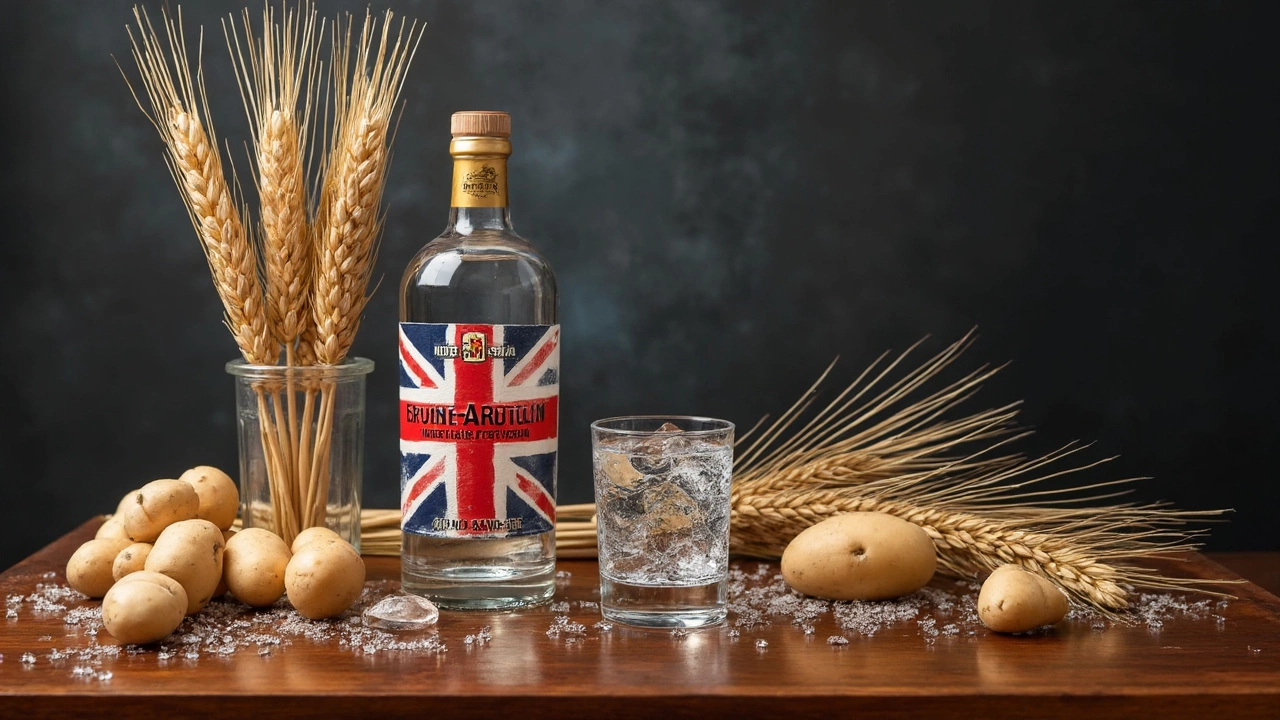If you've ever stood in front of the vodka aisle, feeling stuck, scratching your head as you look at the endless options, you're not alone. Picking a good vodka can feel like solving a puzzle with way too many pieces. But here's the real secret: it's not just about grabbing the fanciest or most expensive bottle.
Start by understanding the basics. A good vodka is often clear, smooth, and has a subtle aroma. You want to look for something that doesn’t burn on the way down—nobody needs their throat scorched, right? Vodkas distilled multiple times tend to be smoother, so keep an eye out for that on the label.
Understanding Vodka Basics
Alright, let's break this down. At its core, vodka is just water and ethanol, but there's a whole lot happening between those two main ingredients. It's distilled from fermented grains or potatoes, but these days you might find vodkas made from unexpected things like corn or even quinoa. Sounds fancy, right? But don’t get too caught up. The real trick is in the distillation and filtering processes, which help in smoothing out the spirit.
Here’s a fun fact: the word 'vodka' comes from the Slavic word 'voda,' which means water. Makes you think about its clarity, doesn’t it? The purer it is, the better it's generally considered.
“A great vodka is simply one you can taste without cringing—look for purity and scarcity in aromas.” — Alex Smiley, Renowned Spirits Critic
Most vodka brands take pride in how many times their vodka is distilled. Double or triple distilled is common, but some go even beyond that. This affects the smoothness, which is why a lot of folks prefer the crystal-clear stuff that goes down easy.
Want a quick tip? Look for vodkas from regions with quality water sources like Poland, Russia, or Scandinavia. It’s not just a marketing ploy; the local water can make a big difference.
- Poland is famous for its rye-based vodkas, giving a spicy, peppery finish.
- Russia often brings a wheat-based option, providing a smooth but slightly sweet profile.
- Scandinavian countries typically use potatoes or grain, offering a rich texture.
So next time you're browsing the vodka aisle, you'll know a lot more about what makes a good vodka and why. Remember, it's not always about the hype or the price, but about how it makes you feel when you sip it—and not just the buzz!
Taste and Aroma
When it comes to picking out a good vodka, taste and aroma are like the dynamic duo you can't ignore. Now, a lot of folks think vodka is tasteless because that's what we often hear. But spend a bit of time sipping and sniffing, and you might be surprised. Some vodkas have a slight hint of sweetness, a grainy nuance, or even a peppery kick.
The aroma plays a big role too. Good vodkas have a clean, mild scent. If you find yourself sniffing some funky or overpowering smell, it's probably not the one you want in your glass or mixed with your juice.
In a quote from Marcus Johansson, a well-regarded mixologist, he says,
"The best vodkas have this magical ability to be invisible and yet enhance anything they touch. A true good vodka balances alone, but plays friendly in a mix."
Here's a simple checklist for assessing vodka by taste and aroma:
- Smooth Finish: It shouldn’t leave you coughing.
- Subtle Notes: Some flavor, not overpowering. Think soft grain, mild sweetness.
- Clean Aroma: Nothing that smells like rubbing alcohol.
Here's a fun fact: some studied drinkers found when blind-tasting that they could distinguish between different vodka brands based more on the 'mouthfeel' and 'aftertaste' rather than the initial sip, proving not all vodkas are alike.

Identifying Quality Ingredients
So, you're on the hunt for a good vodka, but how do you know what makes those clear spirits tick? It's all in the ingredients, and believe it or not, vodka can be made from a whole buffet of raw materials.
First off, many of the best vodkas are distilled from grains like wheat or rye. If you've ever sipped on something like Grey Goose, you're tasting French wheat. This gives a smooth, creamy flavor that's just awesome for sipping or mixing. Rye, on the other hand, often brings a bit of spice to the table, which many vodka lovers appreciate.
But grains aren't the only game in town. There's potato-based vodka too, like Chopin, which is known for a richer, fuller body. Potato vodkas can be a bit heavier, offering a distinctive taste profile that's perfect if you're looking to switch things up.
Then there are the quirky contenders like corn-based vodkas. Tito’s, a favorite for many, uses corn and provides a slightly sweet finish. This choice is great if you're catering to someone who likes a touch of sweetness in their drink without going overboard.
Sometimes you'll come across vodkas made from fruit or even unusual ingredients like quinoa or milk. These can offer unique tastes, but don't expect them on every shelf. They’re more of a niche market play.
Remember, the source of your vodka's ingredients doesn't just affect flavor; it's also a quality marker. High-quality raw materials usually translate to a better spirit. It’s like the old saying, ‘Garbage in, garbage out.’ So next time you’re choosing a vodka, take a minute to read the label and see what it’s made from. It might just elevate your vodka game to the next level!
Price vs. Value
Ah, the age-old debate of price versus what you actually get. When it comes to vodka brands, shelling out big bucks doesn't always guarantee the best tasting experience. It’s easy to think that the most expensive bottle on the shelf is going to blow your mind, but trust me, that's not always the case.
Let's look at why this happens. A higher price can mean better marketing, a fancy bottle, or a long distillation process. But have you ever thought about how it tastes? That's where the magic happens. Plenty of mid-range vodkas offer excellent quality without the hefty price tag. It’s all about the smoothness, the subtle flavors, and how it stands up in a cocktail.
Here's a practical tip: pay attention to blind tasting events—a lot of affordable vodkas have outshone pricier ones in these settings. Those hidden gems are worth hunting for. Even well-known, budget-friendly vodkas like Tito's Handmade Vodka have won people over for their clean taste and versatility.
Now, when balancing price and value, consider what you’ll use it for. If it's for a mixed drink, maybe save a bit and pick one that's good quality but doesn't break the bank. But if you’re sipping it straight or making a Vesper Martini like James Bond, then it might be worth investing just a little bit more for a recognizable, higher-quality brand.
Speaking of value, look out for deals or discounts during the holiday season—the time when everyone seems to lower their prices. This way, you can experiment without feeling guilty. Just remember: the best vodka for you is the one that suits your taste and occasion, not necessarily the one with the steepest price tag.


